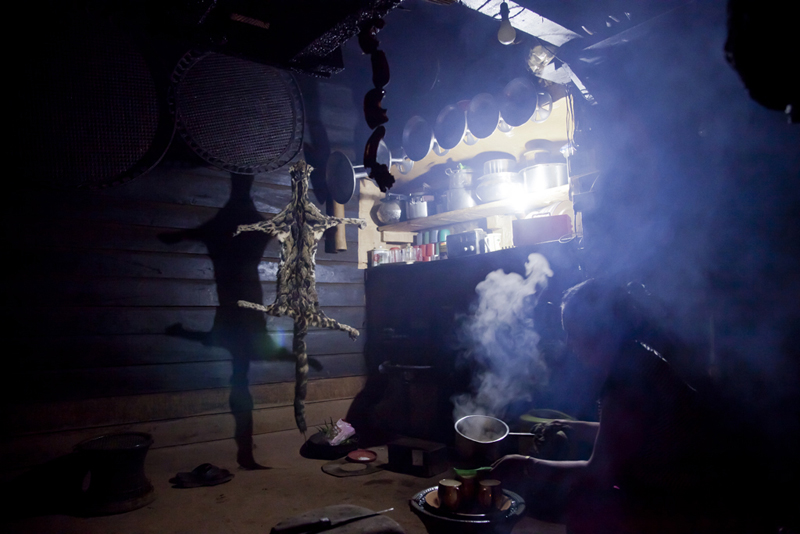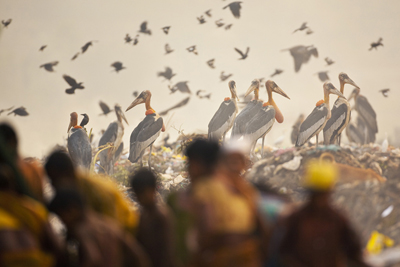- Home
- About Me
- Projects
- Documentaries
- National Geographic: Earth Live 2017
- BBC: Planet Earth II – Cities 2016
- BBC: Planet Earth II – Grasslands 2015
- Animal Planet: Mysterious Wilds of India 2015
- BBC: India – Nature`s Wonderland 2015
- BBC: Wonders of the Monsoon 2014
- National Geographic: Urban Jungle– Downtown 2013
- Animal Planet: Return of the Clouded Leopards 2011
- National Geographic: Secrets of Wild India 2011
- National Geographic: The Secrets of the King Cobra 2009
- BBC: Natural World- Mountains of the Monsoon 2008
- Discovery Channel: Sahyadris – Mountains Of The Monsoon 2002
- Short Documentaries
- Books
- Documentaries
- AWARDS
- NEWS
- Blog
- Contact Me
- Store
Blog
I’m pleased to have one of my images on display at the Burke Museum of Natural History in Seattle, buy Washington. The image, ‘Naga Kitchen’ shows the inside of a kitchen in Nagaland where one can study the entire biodiversity of the state, at least the edible type.
The 2012 International Conservation PhotographyConservation-photo award winners at the Burke: beautiful, brutal, complex exhibit at Seattle’s Burke Museum mixes an environmental-activism message with some utterly transportive camera work. The exhibition will be on from now until Nov. 25, 2012 after which it will travel to other museums across the USA.

A Naga Kitchen
Story behind the image:
A year ago in June I was accompanying a team documenting the Biodiversity of Nagaland. We were in the village of Shatuza when news of a clouded leopard pelt came in. Anaki – the school head-master, Priya Singh and I drove to the little hamlet of Zipu. Here we asked the village Headman and he proudly brought out the half-rotting pelt of a clouded leopard. He said he shot the animal during the obligatory ‘no-hunting’ season while he was on his way to work in the fields. It was about 8AM, and he shot the animal, not to eat it, not in self-defense, not because he was scared, he shot it, just because it was there – a very natural thing to do in these parts along the Indo-Myanmar border.
Skins and skulls of various rarely seen species are part of common decor in the kitchens’ of many Naga tribes – the best place to do a faunal biodiversity inventory. In fact a new species of leaf deer unknown to India, or to science was found whilst rummaging through these dusty collections of old skulls and bones.
What is Conservation Photography?
Cristina Mittermeier puts it best, “The concept of conservation photography has been proposed out of the need to make a distinction between the creation of images for the sake of photography, and the creation of images to serve the purpose of conserving nature.
Conservation photography showcases both the beauty of our planet and its vanishing spirit, and it represents the “pictorial voice” used by many conservation organizations to further their messages. Although traditional nature photography is good enough to do the job, the creation of images that inspire and move people to change behaviors and take action requires an understanding of the issues necessary to tell the story; this is the job of a conservation photographer. “
Canon EOS 5D Mark II + 24-105mm f4 lens; 1/60 sec at f5; ISO 800
In the hills of Meghalaya, northeast India, ‘hunting is engrained in the culture,’ says Sandesh. ‘Everything is eaten.’ Sandesh was photographing a pile of frogs that had been skinned and were drying in the sun when this little boy ran into his house and returned proudly holding a bird. ‘He had shot the blue whistling thrush with a catapult that morning, and it was barely alive,’ says Sandesh. Wildlife is becoming increasingly scarce in the area, not so much because of hunting but because of forest loss to logging, cultivation and development projects. The best hunting areas are now the few pockets of undisturbed natural vegetation, many of them supposedly protected areas.
About the International Conservation Photography Awards
 The International Conservation Photography Awards (ICP Awards), is a premier worldwide photography event. The biennial juried photo competition includes an online exhibit, a six-week museum gallery show at the Burke Museum of Natural History & Culture in Seattle, Washington, and publication in a prestigious photography magazine. The selected prints celebrate the world’s diversity along with the creativity and originality of photographers.
The International Conservation Photography Awards (ICP Awards), is a premier worldwide photography event. The biennial juried photo competition includes an online exhibit, a six-week museum gallery show at the Burke Museum of Natural History & Culture in Seattle, Washington, and publication in a prestigious photography magazine. The selected prints celebrate the world’s diversity along with the creativity and originality of photographers.
Over 75 photos were chosen from more than 1,500 images submitted by amateur and professional photographers from 15 countries across the globe. A panel of five judges selected winning photographs in each of the nine categories. The photographs are conservation-focused, chosen in categories such as Wildlife, Landscape, Underwater, and Natural Environment at Risk, which examines environmental threats to urban areas. Capturing beautiful moments in the natural world from the Arctic to the South Seas, the photos connect us to the tiniest of creatures and enormous environmental changes. The competition and its award-winning photos inspire, educate, and encourage us all to consider our impacts on the world’s natural resources.

In 2010, my image of Greater Adjutant Storks (Leptoptilos dubius) won 1st place in the Community at Risk category of ICP. I was honoured to be present in Seattle for the opening show and to meet with Art Wolfe, the founder and creator of this biennial contest that fosters awareness of our natural world.
For More Information
International Conservation Photography Awards – 2010










